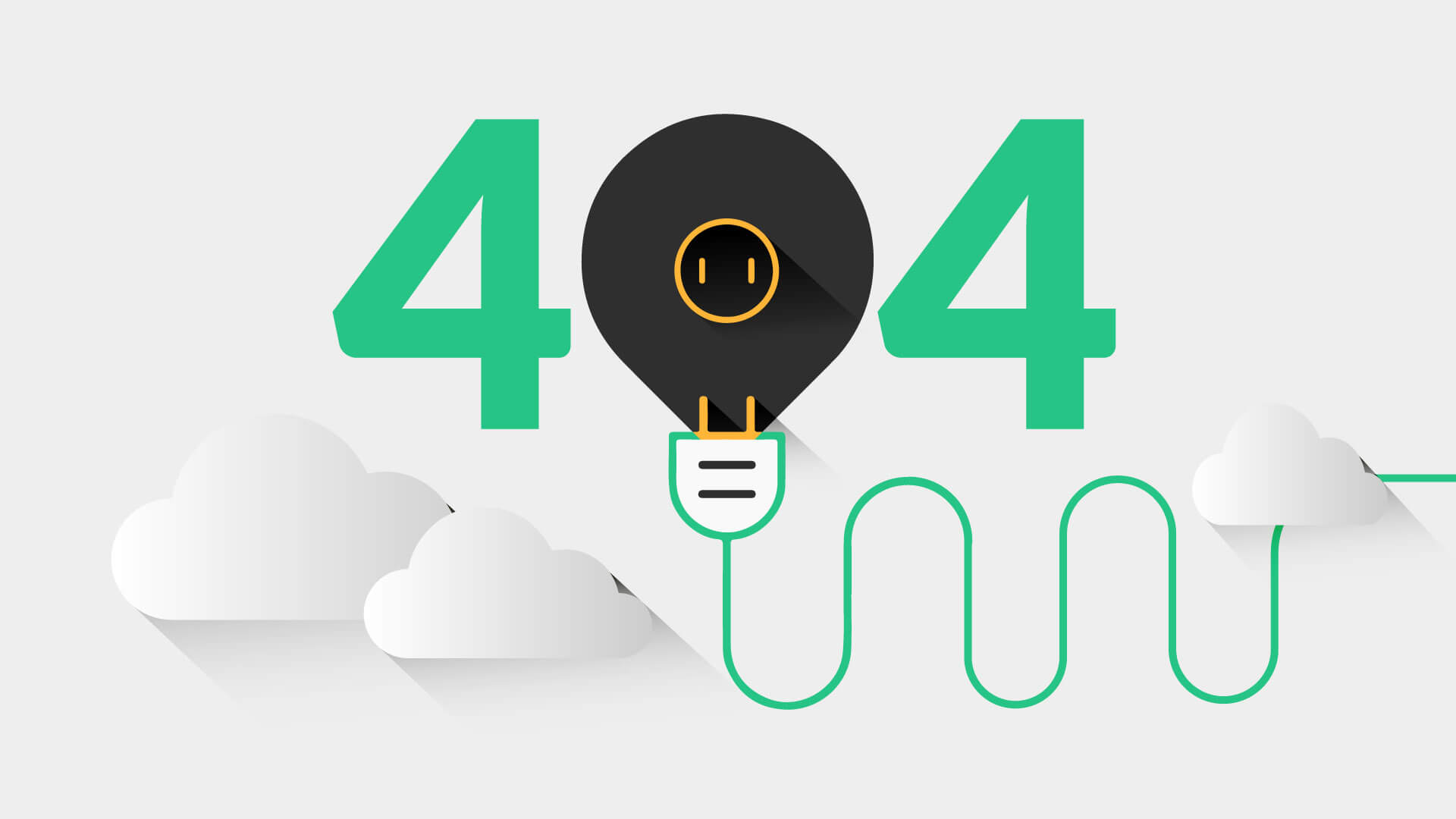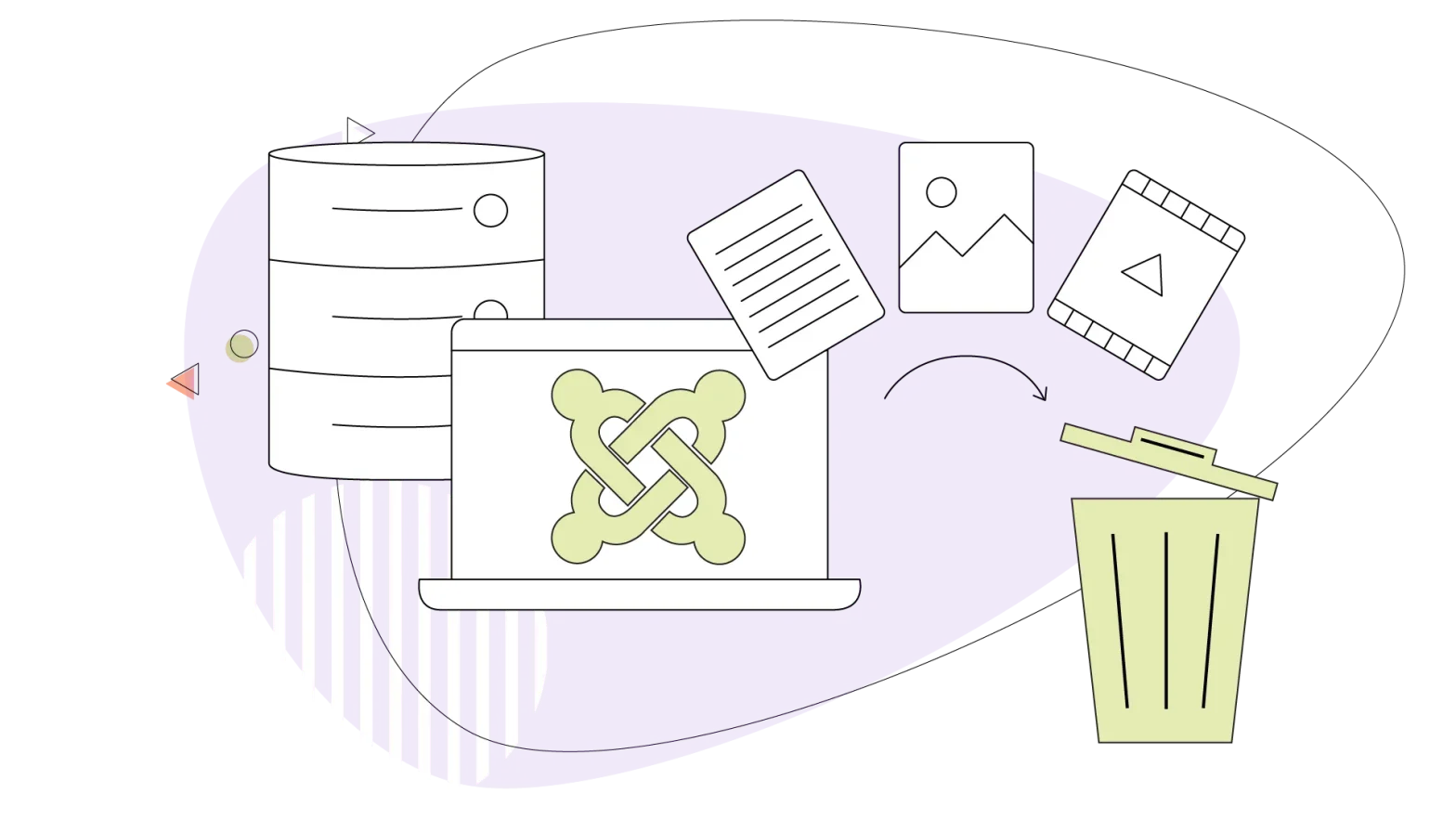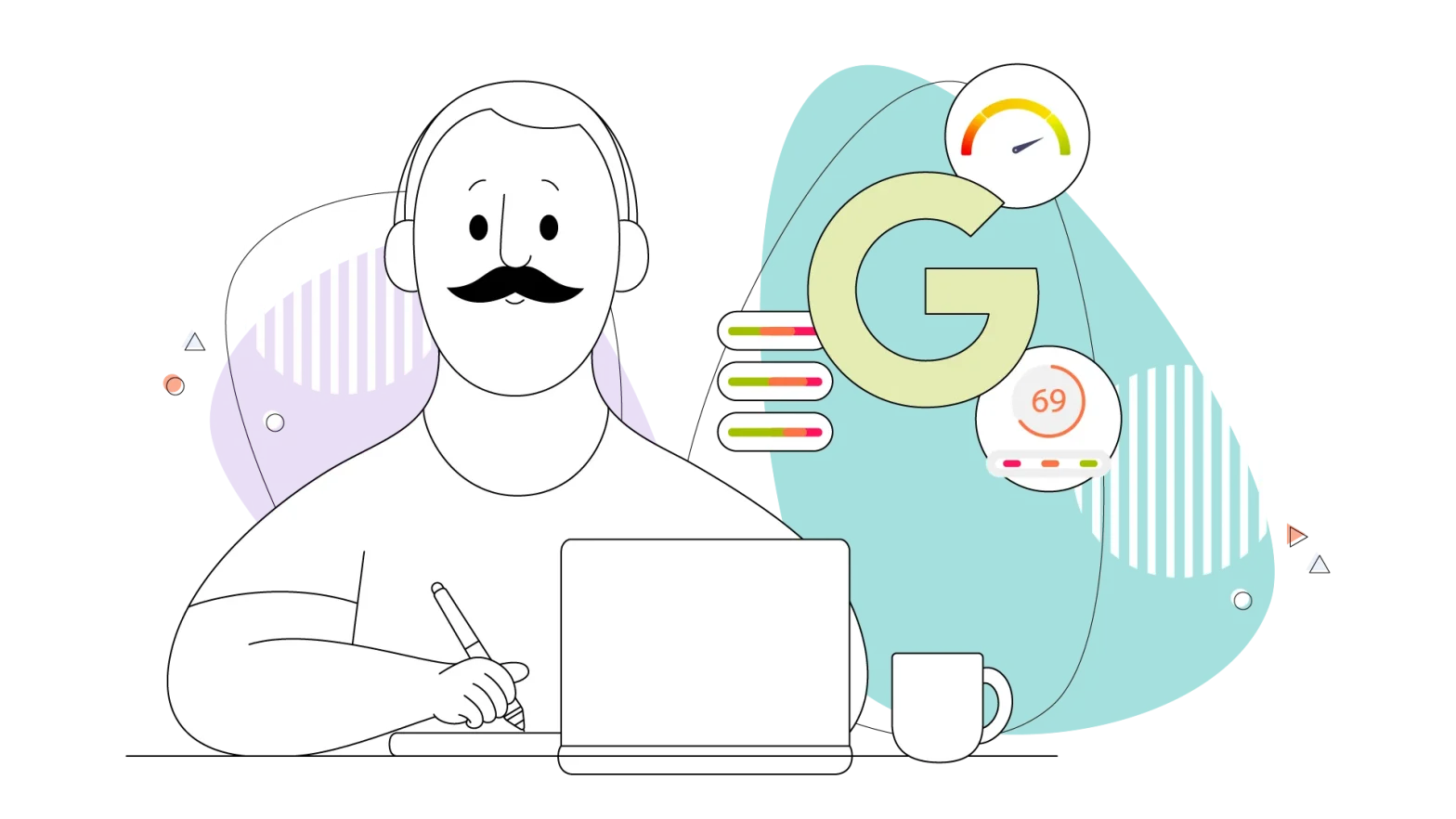Picture this: You’ve just moved to a new home, and you’re looking for a new set of armchairs. Your best options are three local businesses, so you go to their online stores to browse their catalogue and eventually make a purchase. But when you visit one of your favourite stores, you click the link to the “Armchair” category in their menu, and it takes you to an error page. You don’t get a carefully curated selection of great armchairs; you just get a 404 error page. What happened? You just clicked on a broken link.
A dead or broken link is a link that points to nowhere. In the case of internal links (pointing somewhere within your website), it’s usually due to two causes:
- The website has been renamed or moved, its structure has changed, and internal links weren’t modified accordingly.
- The content on the internal links has been moved or deleted.
Sometimes, broken links are external. That means the link that leads nowhere takes us “outside” our website. This usually results from linking to third parties that have moved or deleted their content. Another possible cause for internal and external broken links is a typing error.
For example, a well-thought URL to display a set of armchairs inside an online store is the following: yourwebsite.com/products/armchairs.
On the contrary, this URL will be far more difficult to type correctly (and to remember): yourwebsite.com/products/[a succession of random numbers and letters].
In this article, we’ll find out just how dangerous our website broken links are, both from a user’s and a search engine’s perspective. We’re going to understand the best practices to prevent broken links from occurring in the first place, and naturally, we’ll learn how to fix broken links if we encounter them.
- How Broken Links Harm Your Customer Experience
- How Broken Links Affect SEO
- Internal Links Also Matter
- How to Detect a Broken Link
- How Did I End up With Broken Links?
- How to Fix Broken Links
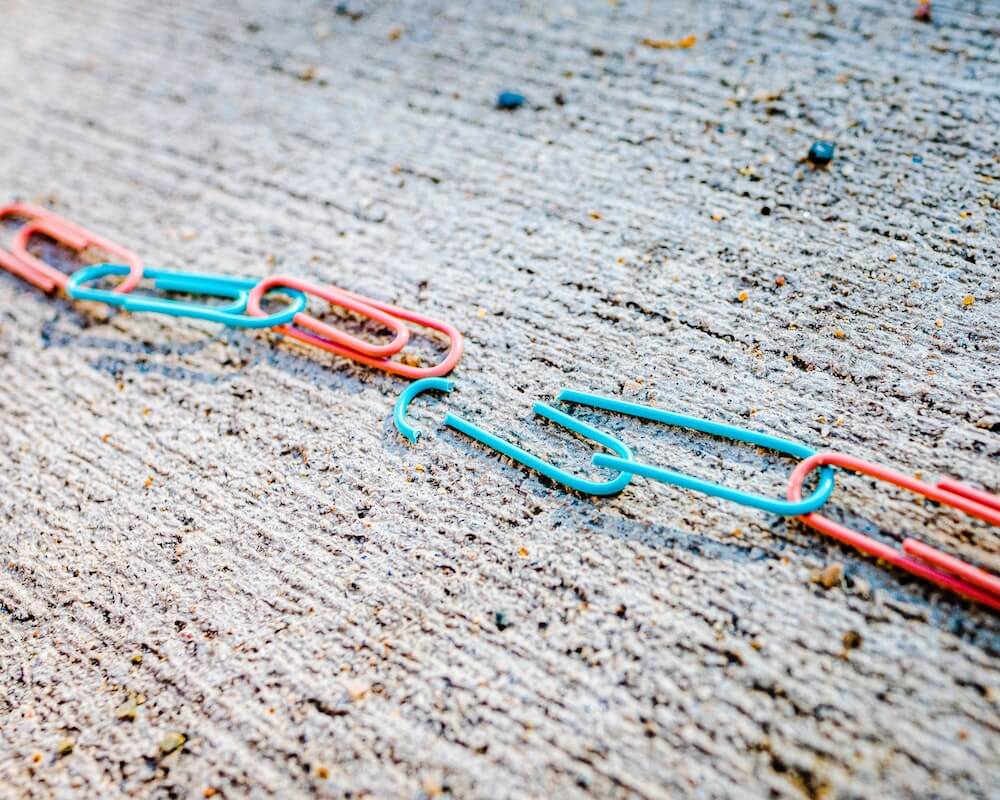
How Broken Links Harm Your Customer Experience
As our hypothetical scenario shows, dead links translate into a terrible customer experience. When someone enters your website, they enter a “conversion funnel.”
They should enter as visitors and leave as customers. Broken links can be roadblocks in this journey. In fact, they can be the end of the road. Our highly competitive online landscape has made users less tolerant of frustration. For instance, a 2022 Emplifi report showed that 86% of customers would leave a brand that has given them a single bad experience.
Granted, in our example, we imagined a broken link appearing in a key place that impedes us from making a purchase. But a broken link is never beneficial.
Let’s say our company’s most significant competitive advantage is our expertise, and we want to link to a resource that will help our customers solve a problem while proving that we know what we’re talking about. If, instead of the great resource we promised, the user finds a 404, they’ll feel disappointed, not engaged, or willing to trust our business. Dead links can make our website seem confusing and unreliable, projecting a poor image of our brand.
How Broken Links Affect SEO
Aside from customer experience, broken links negatively affect SEO. Search engines aim to offer users the most relevant and trustworthy pages in their results. So, a website with links that lead nowhere and feels incomplete and fragmented won’t perform as well as one that provides a smooth navigation experience and fulfills all its promises.
Search engine algorithms’ ranking criteria can be simplified in two words: User experience. Good SEO practices tend to translate into good user experience and vice versa.
On the other hand, if a backlink (a link to your website on a third party’s site) is broken, it doesn’t affect your site’s authority. Broken links neutralize your link-building efforts. SEO experts usually refer to this broken link as “spilling link juice” or simply “link juice.”
Now that we know the harm broken links can cause on our website, the next question is how to fix them.
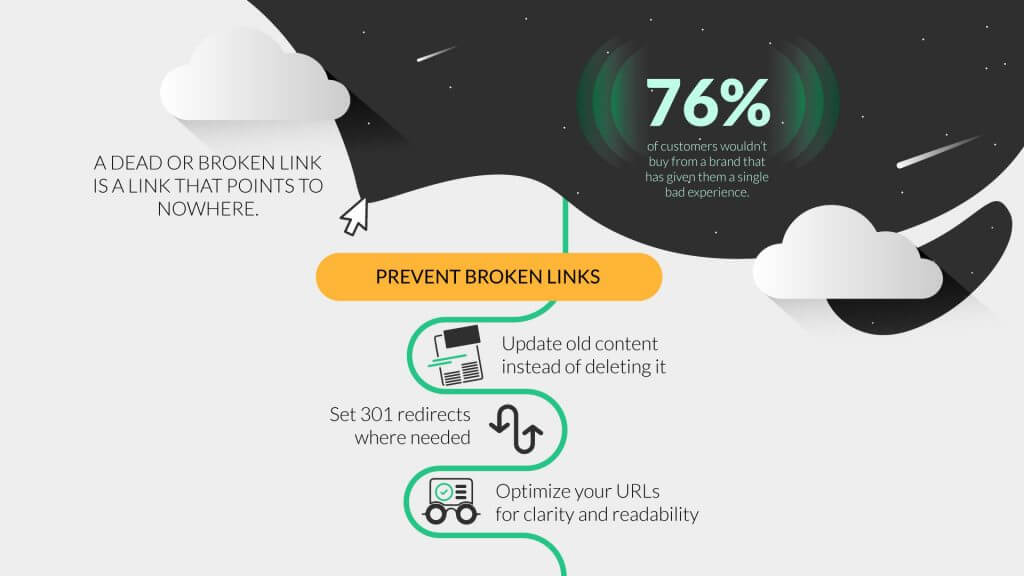
Internal Links Also Matter
Like external links that lead people from other websites to yours, internal links help users to find more relevant content within your site. And not only that. Search engines can better understand your site’s structure if you link your relevant content.
If you have blog posts with similar keywords, link them with your blog’s body text. Revisiting and updating your older posts is an excellent strategy to increase your content’s quality. This and keeping all the other user experiences at the highest level will create a more cohesive image for your website.
Internal linking massively helps visitors navigate your website and locate what they want. In addition, Google says internal linking structures have become an important ranking factor. So if you ignore your site’s external links, you can lose valuable web searches.
How to Detect a Broken Link
Before jumping into how to fix broken links, we first want to detect them. There are many ways to detect a broken link. But let’s take a look at three very common methods. You can do it with the Google Search Console, a WordPress plugin, or an online tool.
Detecting broken links with the Google Search Console is relatively easy. We need to go to the Index > Coverage tab, click to view our Excluded Links and find which pages are being excluded as a consequence of 404 errors. This method has two downsides: It only covers internal links, and all fixes must be made manually outside the Search Console.
WordPress users can count on a tool such as Broken Link Checker to detect and fix their broken links. When considering a tool to install, remember to always check the reviews, its number of active installations, and whether it has been tested on the latest WordPress version. That information is visible on the right-hand side of the plugin in the official plugin repository.
Most broken link checkers will be easy to work with. For instance, once installed and activated, a broken link checker parses all your content, looking for links. This process can vary in length, depending on the size of your website. You can modify some of the plugin’s options by navigating to Settings > Link Checker. Once the parsing is complete, the broken links will appear on your WP admin panel under the “Broken Links” section of your Tools tab.
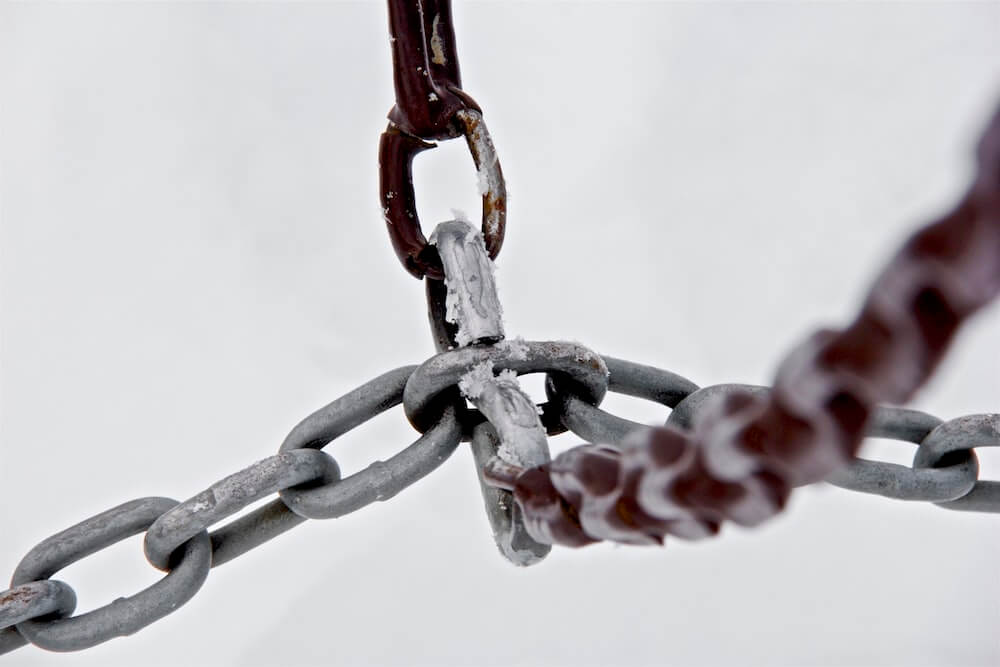
The greatest benefit of using this sort of plugin is that you detect and fix the links within your WordPress admin panel. If you’ve worked with a WordPress site before, you know how user-friendly the dashboard is, so you save a lot of time and hassle. A significant downside we need to consider is that having many active plugins can really slow down your WordPress website. This type of plugin will be pretty resource-intensive, and it doesn’t need to be activated most of the time, so deactivate it or uninstall it once you’ve used it.
An online tool, such as Broken Link Checker from Sitechecker, can also be an excellent option for finding broken links on your website. In this case, the process is as simple as entering the online tool’s website, typing in your site’s URL, and pressing a button. Then, the tool will scan your website, looking for broken links. Once the tool has done its job, it will produce a list of the problematic links and their locations.
The upside of using such an online tool is how easy it is. You don’t need to install anything or link your website to any service. The downside is that you have to manually enter your website’s admin panel and fix the links, one by one, in their corresponding locations. It makes the process a little more cumbersome than using a plugin. This can be irrelevant if we have three or four broken links to fix, but when you have to fix dozens of broken links, it starts to feel like wasting time.
How Did I End up With Broken Links?
As we’ve mentioned, a broken internal link can cause many headaches. Sometimes you may forget to delete or more the content like posts without realizing that you’re creating the broken links yourself!
Of course, there are many reasons behind a broken link, and this section will go through just that, with a few pointers to keep in mind regarding broken links on your website.
Your Website Is Down
That is the most obvious of all. If you see broken external links leading to your site, let’s say, from your Facebook page, you need to check if your website is live.
It becomes more frustrating when the website’s down for many hours before the web administrator finds out. You may have to log in to your web hosting control panel and check your web server’s settings or create a support ticket to find out more. Most reliable web hosts will inform you of any planned maintenance that usually takes a few minutes.
Broken Elements Due to Malfunctioning Plugins and Other Issues
This can happen if you’re working with generally many plugins or any other related code that may affect your content’s display on the web. The broken internal links can result from broken scripts or outdated or poorly written plugins that prevent loading the web page or post.
Unfortunately, there’s only one way to fix this: finding an alternative plugin or resorting to a web developer that will come up with a workaround.
Typos in the URL When Creating a Link
Here’s another common broken link cause: typos. Whether it’s a broken internal link or a broken outbound link to some external page, typos can be a huge issue and even lead to broken links.
The rule of thumb is to double-check your URLs before creating a page or post and carefully copy and paste them into your HTML or hyperlink text. You may also use an online broken link checker to help you find broken URLs.
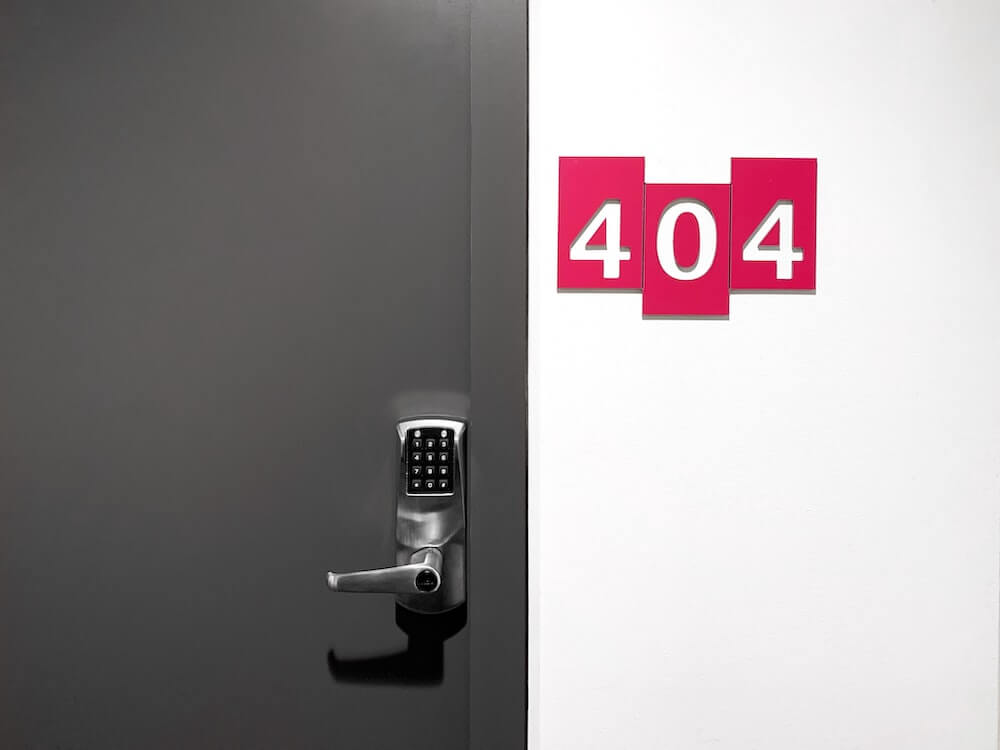
How to Fix Broken Links
With finding broken links covered, we now move to the part where we fix broken links. The best option will depend on the type and purpose of the link. For instance, if pointing to an external resource that complemented our content, we can delete the link while leaving the anchor text. Or we could also use the same anchor text to lead our users to a different website that contains similarly valuable information.
If the dead links are internal, we should set 301 redirects.
A 301 redirect means that the page in question has been permanently moved. If we’re using WordPress, we can easily set 301 redirects with a plugin such as Redirection or 301 Redirects.
In the case of a 404 error page, a user will eventually land on a 404 error code. It might be due to an actual dead link or simply a typing error on their part. But it’s worth discussing the usefulness of 404 error pages and how to make the most out of them.
A 404 is an HTTP standard response code that indicates that the server could not find the requested resource. There’s no technical issue other than the server being unable to find what you requested.
Some SEO experts used to suggest that, instead of 404, we should use 302 redirects. The 302 redirects tell Google that the URL in question is temporarily unavailable and automatically redirects users to another page. For instance, we may redirect users to our homepage.
302s are not ideal. They’re bad for SEO; in Google’s eyes, 302s don’t have the same leverage as the original content. And they’re not the best for users, either. Imagine you want to visit a certain page within a website, and you land on the homepage. Wouldn’t it be confusing?
It’s best to be transparent, letting the user know that the content is unavailable (or doesn’t exist) and giving them options to continue navigating your website. For instance, suggest that they check your latest posts on your blog, take a look at your most recent products, or simply return to the homepage.
Summing It Up: Best Practices to Prevent Broken Links on Your Website
One of the most common causes of broken links is absolutely preventable. Update old content instead of deleting it. If you don’t have the time to update it, consider adding a disclaimer that the content needs to be updated and offer visitors a more relevant and recent alternative.
If you recently reorganized or moved your website, check for broken links and set 301 redirects where needed. Being proactive will help your website more than trying to find and fix broken links on your website.
Broken backlinks can be the consequence of very long, randomly generated URLs. Fixing broken links can be tiresome after some point, so be sure to optimize your URLs for clarity and readability. This decreases the chance of misspelled URLs and, therefore, of broken links.
Even if we’re taking all the necessary precautions, regularly checking for broken links is always a smart move since we might be linking to third parties that don’t have the same good practices.
